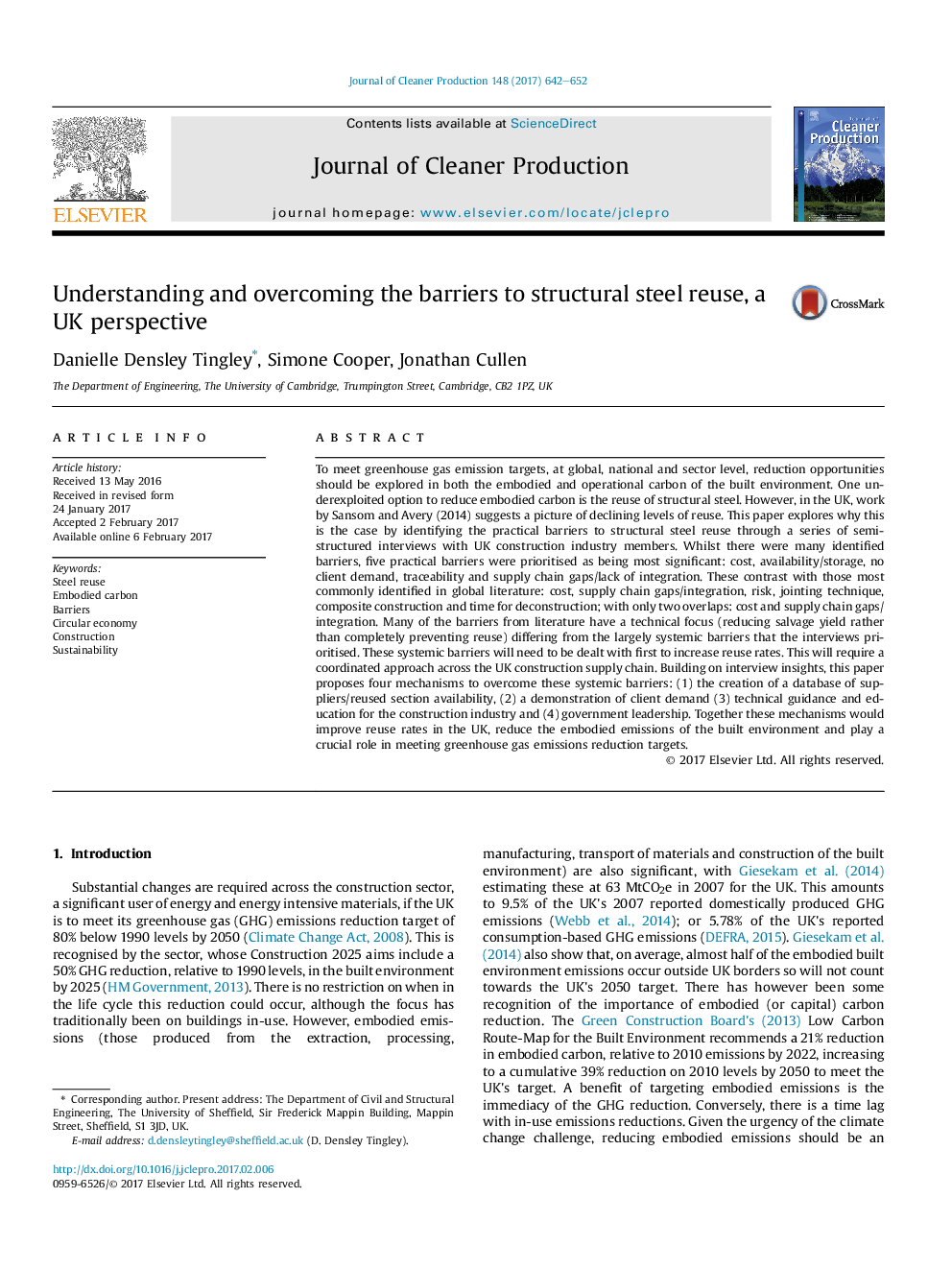| کد مقاله | کد نشریه | سال انتشار | مقاله انگلیسی | نسخه تمام متن |
|---|---|---|---|---|
| 5480226 | 1522105 | 2017 | 11 صفحه PDF | دانلود رایگان |
عنوان انگلیسی مقاله ISI
Understanding and overcoming the barriers to structural steel reuse, a UK perspective
ترجمه فارسی عنوان
درک و جلوگیری از موانع استفاده مجدد از فولاد سازه، چشم انداز انگلستان
دانلود مقاله + سفارش ترجمه
دانلود مقاله ISI انگلیسی
رایگان برای ایرانیان
کلمات کلیدی
استفاده مجدد از فولاد، کربن آغشته شده موانع، اقتصاد مدرن، ساخت و ساز، پایداری،
موضوعات مرتبط
مهندسی و علوم پایه
مهندسی انرژی
انرژی های تجدید پذیر، توسعه پایدار و محیط زیست
چکیده انگلیسی
To meet greenhouse gas emission targets, at global, national and sector level, reduction opportunities should be explored in both the embodied and operational carbon of the built environment. One underexploited option to reduce embodied carbon is the reuse of structural steel. However, in the UK, work by Sansom and Avery (2014) suggests a picture of declining levels of reuse. This paper explores why this is the case by identifying the practical barriers to structural steel reuse through a series of semi-structured interviews with UK construction industry members. Whilst there were many identified barriers, five practical barriers were prioritised as being most significant: cost, availability/storage, no client demand, traceability and supply chain gaps/lack of integration. These contrast with those most commonly identified in global literature: cost, supply chain gaps/integration, risk, jointing technique, composite construction and time for deconstruction; with only two overlaps: cost and supply chain gaps/integration. Many of the barriers from literature have a technical focus (reducing salvage yield rather than completely preventing reuse) differing from the largely systemic barriers that the interviews prioritised. These systemic barriers will need to be dealt with first to increase reuse rates. This will require a coordinated approach across the UK construction supply chain. Building on interview insights, this paper proposes four mechanisms to overcome these systemic barriers: (1) the creation of a database of suppliers/reused section availability, (2) a demonstration of client demand (3) technical guidance and education for the construction industry and (4) government leadership. Together these mechanisms would improve reuse rates in the UK, reduce the embodied emissions of the built environment and play a crucial role in meeting greenhouse gas emissions reduction targets.
ناشر
Database: Elsevier - ScienceDirect (ساینس دایرکت)
Journal: Journal of Cleaner Production - Volume 148, 1 April 2017, Pages 642-652
Journal: Journal of Cleaner Production - Volume 148, 1 April 2017, Pages 642-652
نویسندگان
Danielle Densley Tingley, Simone Cooper, Jonathan Cullen,
